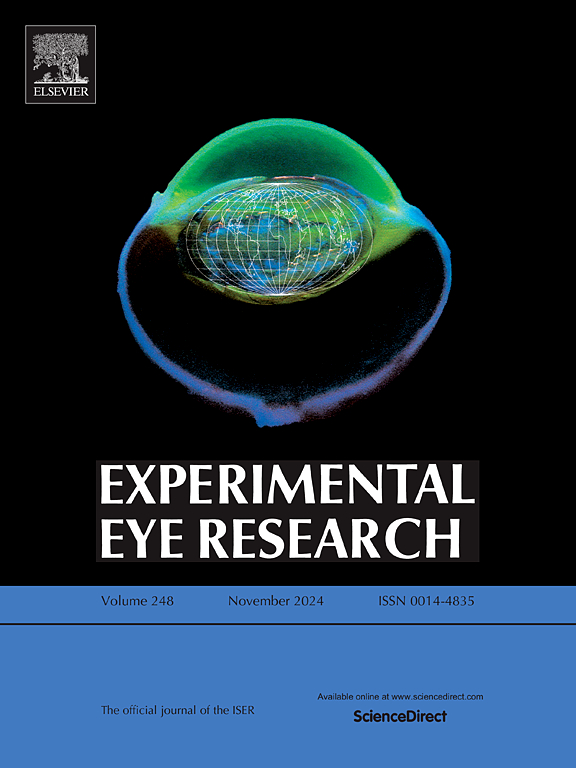Breaking barriers in ocular drug delivery for Uveitis: Advanced drug delivery systems, challenges and future prospects
IF 3
2区 医学
Q1 OPHTHALMOLOGY
引用次数: 0
Abstract
Uveitis is inflammation of the uvea, the middle layer of the eye which comprises of iris, ciliary body and choroid. Complications associated with uveitis include chronic pain, vision impairment and even blindness if not treated adequately. Conventional treatments for uveitis include immunosuppressive medications such as corticosteroids and biologics, which present challenges of low bioavailability due to complex anatomical structure of eye, rapid drug elimination, enzymatic degradation and the blood-retinal barrier. Consequently, they require frequent administration and are often associated with systemic side effects. In comparison to conventional drug delivery advanced drug delivery systems offer advantages such as targeted drug delivery, sustained drug release and reduction in side effects. A thorough literature search was conducted using Google Scholar, PubMed, covering publications from 2000 to 2024. The search terms included “uveitis,” “pathology and pathophysiology of uveitis,” “barriers in ocular drug delivery,” and “uveitis conventional treatments.” To refine the search results, “uveitis” was combined with different keywords such as “polymeric nanoparticles,” “liposomes,” “nanomicelles,” “dendrimers,” “nanoemulsions,” “hydrogels,” “implants,” or “microneedles” to gather information related to each novel drug delivery system. Only English language studies were considered. The inclusion criteria encompassed both review and research articles specifically related to uveitis, with a focus on studies evaluating novel drug delivery systems for its treatment. Studies on ocular drug delivery systems unrelated to uveitis were excluded. No formal statistical analysis was conducted. This review highlights various advanced drug delivery approaches including polymeric nanoparticles, liposomes, nanomicelles, dendrimers, nanoemulsions, hydrogels, implants and microneedles for the treatment of uveitis.
打破葡萄膜炎眼部给药的障碍:先进的给药系统、挑战和未来前景
葡萄膜炎是葡萄膜的炎症,葡萄膜是眼睛的中间层,由虹膜、睫状体和脉络膜组成。与葡萄膜炎相关的并发症包括慢性疼痛、视力损害,如果治疗不当甚至失明。葡萄膜炎的传统治疗方法包括免疫抑制药物,如皮质类固醇和生物制剂,但由于眼睛复杂的解剖结构、药物快速消除、酶降解和血液视网膜屏障,这些药物存在生物利用度低的挑战。因此,它们需要频繁给药,并经常伴有全身副作用。与传统的给药系统相比,先进的给药系统具有靶向给药、药物持续释放和减少副作用等优点。使用谷歌Scholar, PubMed进行了全面的文献检索,涵盖2000年至2024年的出版物。搜索词包括“葡萄膜炎”、“葡萄膜炎的病理和病理生理”、“眼部药物输送障碍”和“葡萄膜炎的常规治疗”。为了完善搜索结果,将“葡萄膜炎”与不同的关键词结合起来,如“聚合纳米颗粒”、“脂质体”、“纳米胶束”、“树状大分子”、“纳米乳液”、“水凝胶”、“植入物”或“微针”,以收集与每种新型药物传递系统相关的信息。只考虑英语语言学习。纳入标准包括与葡萄膜炎相关的综述和研究文章,重点是评估新型药物输送系统治疗葡萄膜炎的研究。与葡萄膜炎无关的眼部药物输送系统的研究被排除在外。未进行正式的统计分析。本文综述了各种先进的给药方法,包括用于治疗葡萄膜炎的聚合物纳米颗粒、脂质体、纳米胶束、树状大分子、纳米乳液、水凝胶、植入物和微针。
本文章由计算机程序翻译,如有差异,请以英文原文为准。
求助全文
约1分钟内获得全文
求助全文
来源期刊

Experimental eye research
医学-眼科学
CiteScore
6.80
自引率
5.90%
发文量
323
审稿时长
66 days
期刊介绍:
The primary goal of Experimental Eye Research is to publish original research papers on all aspects of experimental biology of the eye and ocular tissues that seek to define the mechanisms of normal function and/or disease. Studies of ocular tissues that encompass the disciplines of cell biology, developmental biology, genetics, molecular biology, physiology, biochemistry, biophysics, immunology or microbiology are most welcomed. Manuscripts that are purely clinical or in a surgical area of ophthalmology are not appropriate for submission to Experimental Eye Research and if received will be returned without review.
 求助内容:
求助内容: 应助结果提醒方式:
应助结果提醒方式:


